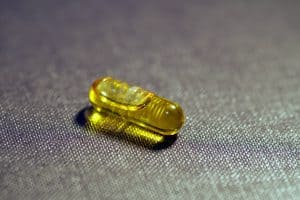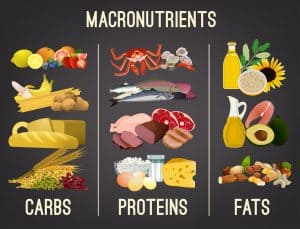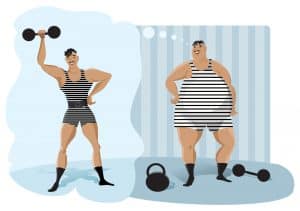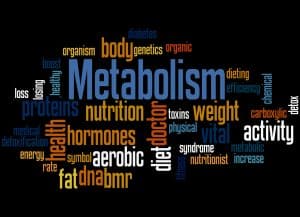If you feel exhausted after a few minutes of stepping on the cardio machine, or couples of exercises with weights that don’t seem to get heavier over time, then it is a sign that you lack stamina.
So what is exactly stamina? and what’s the difference between stamina, strength, and endurance? and how to increase stamina?
Let’s get to it!
- Table of Contents
So What Is Stamina?
Stamina is the energy and strength that allow you to maximize the performance of physical activities for an extended period of time. Lifting heavy weight for as many repetitions is an example of stamina. Stamina helps you push through the unease of the activity and reduces the feeling of exhaustion and fatigue.
So, to increase stamina you should maximize two factors: strength and the period of time over which the activity is performed or simply endurance.
Strength VS. Endurance
Strength (also called muscular endurance): is the ability to exert maximum force over a short period of time. For example, one-Repetition Maximum (1RM) of a particular lift, say bench press or deadlift, is a good measure of your strength at that particular movement. If the weight you perform 1RM increases, this means your strength has gone up.
Endurance (called cardiovascular endurance): contrary to the strength, endurance is the ability to perform light to moderate force but over a long period of time. It increases the ability of the respiratory system (cardiovascular) to distribute oxygen efficiently to the body. For example, if you bench press 50% of your 1RM for 10 repetitions at day 1, and at day 30 you can press the same weight for 15 repetitions then you can say that your muscular endurance has increased.
Therefore, if you can perform the bench press at, say, 80% of your 1RM for 10 repetitions then it is your stamina that increased because you were able to lift more weight for more repetitions.
Sprinters are another example of athletes who can greatly benefit from increasing stamina. This is because they have to run at an explosive maximum speed for a longer period of time. That is why the 400-meter race is called the ultimate race.

How To Increase Your Strength And Endurance?
It is clear by now that in order to increase your stamina, you will need to increase your muscular strength as well as your cardiovascular endurance. However, we need to understand the different energy systems in the body that come into play and interact together during intense exercise sessions that boost your stamina.
Energy Production Systems
When you take on physical activity, like working out, your muscle cells require significantly more energy your body has to generate to support that activity. This energy is provided by a molecule called “Adenosine Triphosphate“ or (ATP), which is the basic unit of energy that the cell absorbs. Your cells further convert the ATP into two other compounds, one of which gets recycled back into ATP.
Your body uses three energy systems to make sure you always produce ATP to meet your activity demands. During a workout session, your body produces up to 1000-fold of ATP than at rest. So, the more your muscle cells absorb and generate ATP the more energy available to fuel your physical activity.
- Phosphocreatine Energy System: targets your muscular strength. It provides energy to your body for a few seconds only needed for intense fast activity, like 1RM.
Your body cannot produce much of its energy through the phosphocreatine system compared to the other two systems below.
Thus, muscle cells cannot store as much and take a longer time (about 5 minutes) to recharge. Therefore, supplementing creatine monohydrate can help boost your phosphocreatine system.
After about 10 seconds, the phosphocreatine system gets exhausted, and the energy needed for further activities is produced by the anaerobic system.
- Anaerobic Energy System: also targets your muscular strength. The anaerobic system provides energy supply to your body in the absence of oxygen (“An” means without, and “aerobic” means linked to oxygen).
This energy system is mainly used for the first tens of seconds up to 2 minutes of each exercise. It generates a quick burst of energy before oxygen becomes available to your body through the aerobic system.
Unlike the phosphocreatine system, the anaerobic system gets its energy from glycogen and glucose.
Targeting your anaerobic system helps develop Type IIb skeletal muscle fibers. This type of fibers (also called white fibers due to the absence of hemoglobin; red protein responsible for oxygen delivery to the blood) is used in activities needing fast contracting muscles over very fast contracting time, like heavy weightlifting and short sprints, for example. In this case, your muscle fibers will have low resistance to fatigue.
- Aerobic Energy System: which targets your endurance. This system provides energy to the body in the presence of oxygen “aerobic” and requires effort that extends over 2 minutes.
The aerobic energy system helps developing Type I and Type IIa muscle fibers or red muscle fibers. This is due to oxygen deliverability to the blood cells. In this case, muscle contraction time is slow to medium and resistance to fatigue is high.
Just like the anaerobic system, the aerobic system gets its energy from glycogen and glucose.

Training Tips To Increase Strength and Endurance
Now that we know the differences between strength and endurance and the different energy systems involved, here are a few suggested examples on how to train to increase your strength and endurance, respectively:
Training To Increase Strength
- High-Intensity Interval Training (HIIT): intermittent short explosive movements help increase your energy bursts. This can be done with cardio equipment, body weight, or weights.
- 1MR Training: performing basic movements like clean and press, deadlift, and bench press twice a week for 8-12 sets, 2-1 repetitions each with maximum weight.
- Progressive overload: incrementally increasing the weight each set until reaching your maximum weight for 1-2 repetitions.
Note that even if you are training for strength, like low repetition workout, or 10 fast sprints, about 50% of the energy supply will come from the phosphocreatine and other 50% from the anaerobic system.
Although strength training enhances your heart rate capacity, elongated time of strength training alone is not sustainable. It can add extra stress to your body which can disrupt your hormonal system. Thus, incorporating exercises that develop your aerobic system is needed.
Training To Increase Endurance
- Steady-state cardio for 20 – 60 minutes.
- Light to moderate weight lifting for high repetitions of 15 – 20.
- Drop-sets: incrementally reducing the weight each set with a very short rest between the sets.
- Supersets: training two muscle groups without (or with a very short) rest between the sets. For example, perform a set of biceps followed immediately by a set of triceps.
Note that over the course of your training these energy systems operate sequentially.
Glycogen And Stamina
Your body relies heavily on carbohydrates during your training sessions as a source of fuel. Carbs are broken up into a simple sugar called glucose. Your blood can only carry about 4 grams of glucose at any time. If this level raises in the blood and stayed high for a long time, it can damage your blood vessels and you become diabetic.
Therefore, the extra glucose is packaged and stowed away in your skeletal muscles and your liver as glycogen. This way, when you perform a physical activity the body has quick access to glycogen that is easily converted to glucose.
Glycogen And Strength
During strength training of, say, low repetitions with heavyweights, each set will last approximately 10-20 seconds. Therefore, phosphocreatine is the primary source of energy that generates ATP to fuel your workout. Do you still need glycogen?
The answer is, absolutely, yes. Your carbohydrate intake is essential for strength training for two reasons:
- A study by Ball University researchers conducted on 8 male athletes performing leg extension exercise at 70% of the 1MR consisting of 6 sets, each set contains 6 repetitions only. The study showed that despite the heavy weight and low repetitions, the workout depleted about 23% of the glycogen in the muscle. This clearly indicates that you need both phosphocreatine and glycogen in order to fuel your strength training.
- Between the sets, your aerobic system uses glycogen as a primary source to generate ATP. If not enough glycogen available, your performance for the next set will fall dramatically.
Glycogen And Endurance
During cardiovascular endurance training, your body utilizes up to 80% of its energy from glycogen. This glycogen usage will increase exponentially as your training intensity increases, your body uses twice as much glycogen when you’re at 60% of your maximum intensity than at 30%.
Once your muscle glycogen drops, not only your intensity will drop, but also your muscles will look flat. That’s is why athletes and bodybuilders consume carbohydrates immediately following, if not during, the workout session.
Another important reason both your strength and endurance cannot increase on low glycogen intake is that a low-carb diet was shown to reduce testosterone and increase cortisol levels in the body. This, in turn, will cause a reduction in your strength and cardiovascular endurance.
Thus, we conclude that you cannot increase or even sustain your stamina on a low carb diet.

Eating To Increase Stamina
It is important to make the right choice of diets to increase your stamina. Not only to help optimize your athletic performance but also to maximize your energy levels for other daily activities. Focus on essential macro-and micronutrients by picking particular foods selection.
Primary Nutrients
- Complex Carbohydrates: the main source from which your body gets glucose and glycogen to produce ATP energy necessary to increase your stamina. Good food examples are oats, sweet potatoes, and bananas.
- Protein: your body breaks down protein into amino acids; the building block of the muscle. It helps you rebuild torn muscle fibers from training which increases muscle density and strength.
- Iron: a mineral that exists extensively in the red blood cells. Red cells transport oxygen from your lung to the muscle tissues for glycogenesis; the transformation of glycogen to glucose, to produce energy.
Iron deficiency can cause fatigue, dizziness, and lack of concentration. Examples of iron-rich food are Tofu, spinach, broccoli, lentils, and eggs. In addition to these sources, you can also supplement your iron intake.
- Vitamin C: it is no secret that bacterial and viral infection, like cold and flu, greatly drains your energy, which can set your stamina back.
Vitamin C helps strengthen your immune system and minimize the risk of getting sick. Examples of foods rich in vitamin C are lemons, oranges, lychees, and strawberries.
Supplements To Boost Your Stamina
In addition to energy drinks and bars, there are other important elements that you can supplement with your diet to boost your stamina.
- Creatine Monohydrate: creatine increases your phosphocreatine resulting in a rapid increase in ATP production, and an improved anaerobic energy system. It also reduces your recovery time during high-intensity training.
- Caffeine: a stimulant that helps the release of adrenaline and enhances your nervous system. This will increase your heart rate to pump more blood to your muscles and speed up the release of glucose into the bloodstream for energy.
- Beta-Alanine: an amino acid derivative. It directly increases your endurance by delaying fatigue. Muscle fatigue results from the accumulation of hydrogen ions during intense training, which lowers the pH. Beta-Alanine helps reduce the ability of the muscle to collect hydrogen iron.

Summary
Bottom line is if you want to increase your stamina you have to enhance your (i) strength and (ii) the amount time you’re able to perform exercises or endurance.
Three energy systems your training routine should target to increase your stamina:
phosphocreatine – provides energy for heavy, explosive movements over a short amount of time of order 10 seconds, like 1RM. This system will work on your muscular strength.
Anaerobic – provides energy for performance up to 2 minutes, like HIIT. This system will work also work on your muscular strength.
Aerobic – provides energy for performance over 2 minutes, like low-to-moderate weights for high repetitions, or long cardio sessions. This system will work on your cardiovascular endurance.
The primary energy source of these systems is glucose/glycogen (glucose stored in your muscles and liver).
Examples of workout routines to boost your stamina might include:
Strength training– progressive overload until reaching 1RM, heavyweight and low repetitions and a high number of sets.
Endurance training– moderate to low weights for high repetitions of 12-20, dropsets, and steady state cardio sessions 20 to 60 mins.
Furthermore, eating to increase your stamina should focus on adequate amounts of carbohydrates intake for fast energy supplies, proteins to increase muscle recovery and strength, iron to help glycogenesis, and vitamin C to boost your immune system.
Finally, supplementing your diet with creatine, caffeine, BCAAs, and Beta-Alanine will noticeably help increase your stamina.













